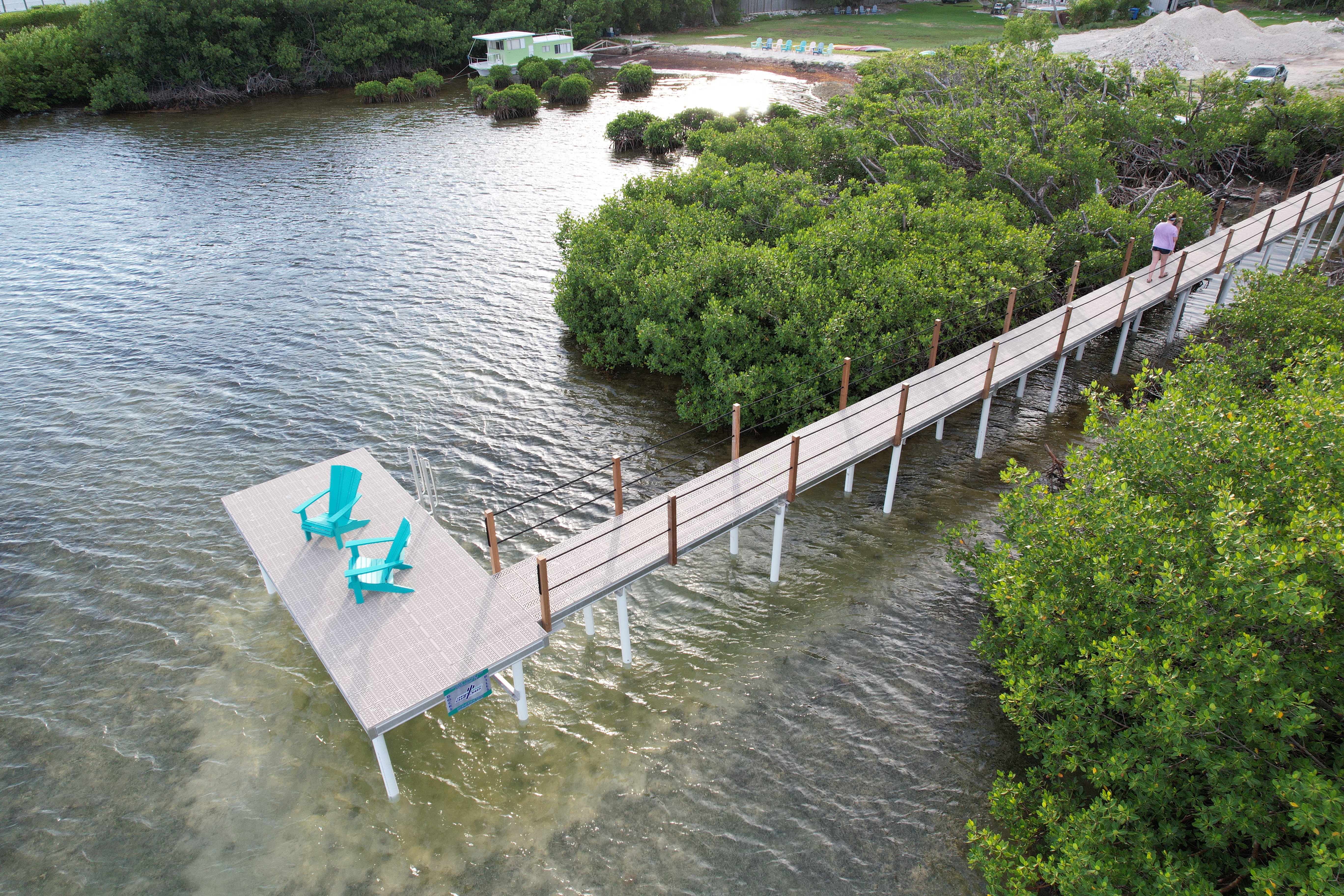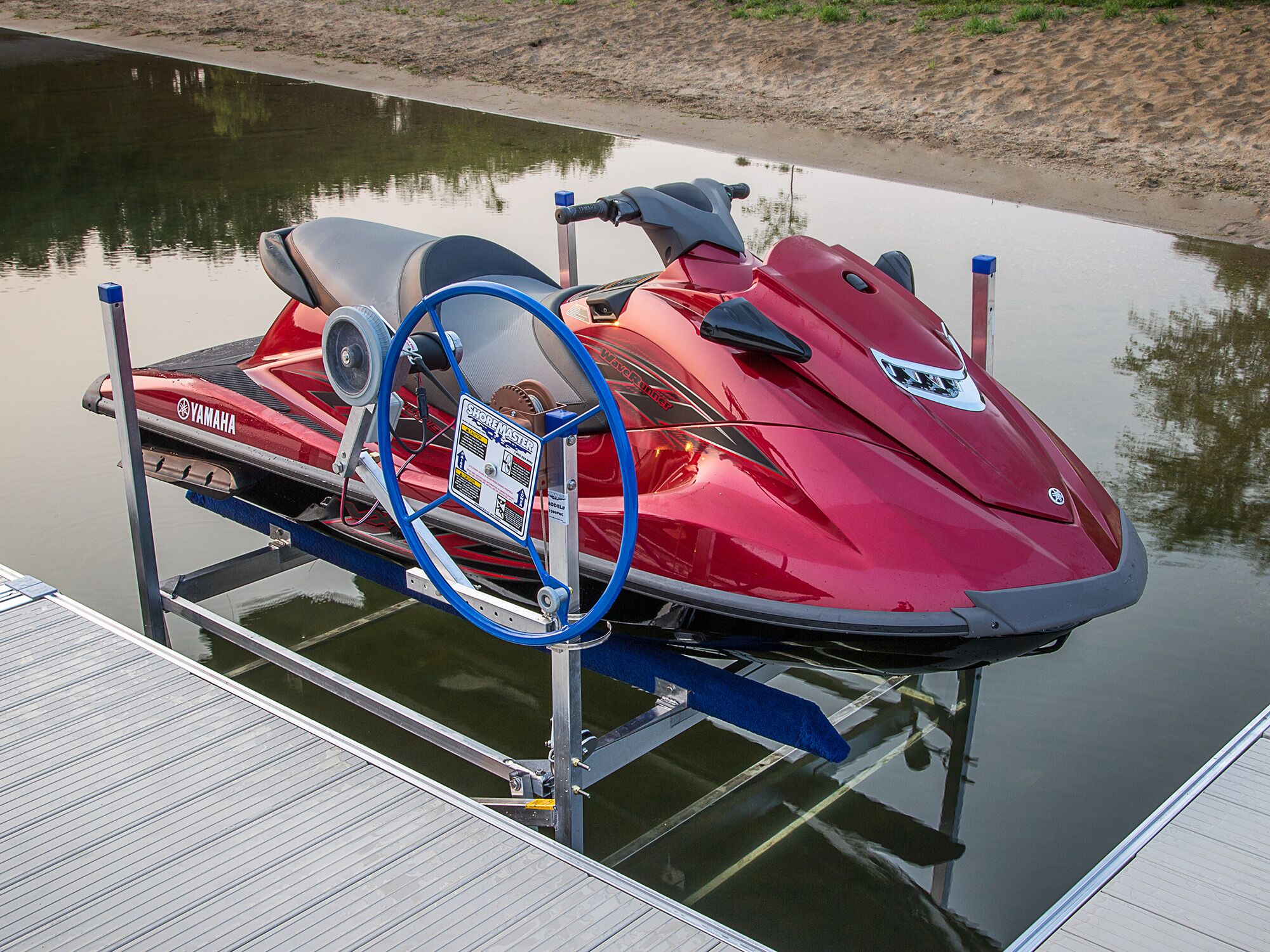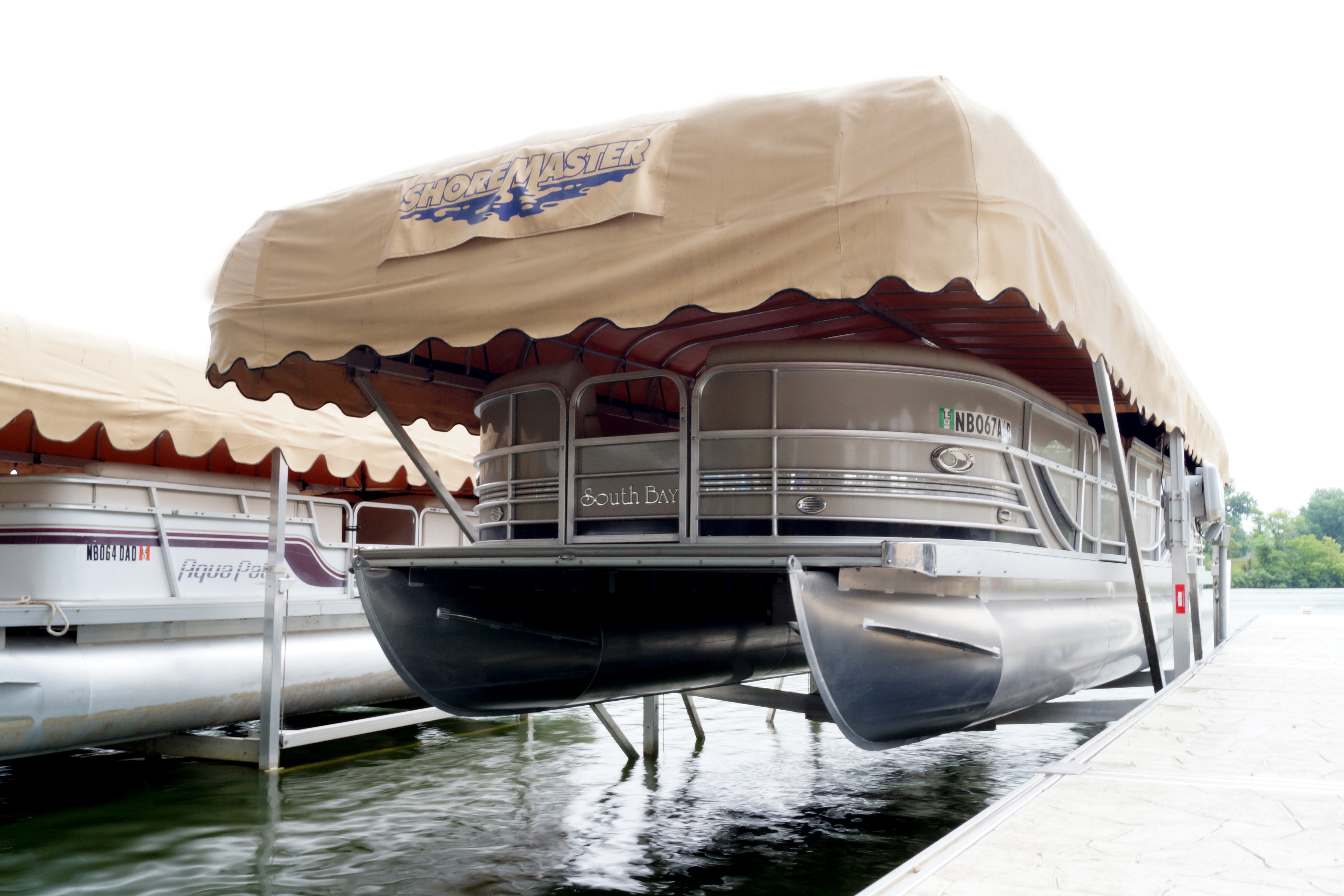May 15, 2025
Spring Dock Installation 101: How to Install a Dock
Written by ShoreMaster Marketing
As the ice thaws and the sun gradually warms the water, passionate boaters can feel the tingling sensation of spring on the horizon. This transitional period presents the perfect opportunity to be more intentional with your boating season preparations. Whether you’re reinstalling a trusted dock or setting up a brand-new system, thoughtful planning can save time and ensure safety, allowing you more time to enjoy what you love most.
In this guide, we’ll explore the key considerations for a smooth and secure dock installation process, setting the stage for an unforgettable season on the water.

Choosing the Right Dock for Your Waterfront
Understanding your waterfront's conditions is critical for those looking to install a new dock system. This enables you to determine the most suitable boat dock type and configuration.
Here’s a quick rundown of the primary considerations:
-
Assessing Water Conditions
Take note of your property’s waterfront characteristics, including water depth, shoreline slope, and bottom composition. These factors will help determine the most compatible dock type and anchoring system. For instance, if your waterfront has a gradual slope, soft, sandy bottom, and shallow water, a floating dock may be ideal due to its adaptability and lighter anchoring requirements. Conversely, in deeper water with strong currents, stationary docks with sturdy pilings offer the stability required to withstand these conditions.
For those re-installing an existing dock system, it’s important to account for the seasonal impact on water levels. Even in areas where water levels are typically consistent, the transition from winter to spring can introduce significant variations. For example, melting snow and ice from higher elevations often increases runoff. Similarly, spring rain showers and potential storms can further alter the waterfront depth.
-
Types of Docks: Floating vs. Stationary
When it comes to docking solutions, two of the most common choices are floating and stationary (standing) docks. Each has unique features and advantages, so assessing which one best suits your waterfront location is important.
Here’s a quick comparison of these dock types:
- Floating Docks: As the name implies, floating docks utilize floatation systems that allow the structure to rest on the water's surface, rising and falling with changing water levels. This adaptability makes them ideal for waterfronts with fluctuating water levels, such as lakes with seasonal tides or rivers prone to heavy rain runoff. However, floating docks may feel less stable underfoot, especially in areas with strong waves or currents, and are more susceptible to wear and tear from continuous water movement.
- Stationary Docks: Also referred to as standing or fixed docks, these docking solutions are anchored to the ground with pilings or supports. They offer greater stability and are ideal for deep water or environments with minimal water-level variation, like protected bays or ponds. Stationary docks are also well-suited for locations prone to high waves or strong currents.
No matter how you prefer spending time on the water, a dock will likely be the centerpiece of your recreational pursuits. In addition to being the starting point for most of your waterfront activities, a well-designed dock can be an invaluable extension of your home and entertainment space. A good dock will provide safe and easy water access, withstand the elements, and adapt to seasonal changes. A great dock system will enhance your waterfront experience.
Essential Tools and Materials for Dock Installation
ShoreMaster’s Infinity fts9 Dock System features the innovative QuickConnect (QC) assembly system, which utilizes a series of pre-installed brackets, connectors, and mounting points on the dock frames to make installation, customization, and reconfiguration as intuitive and effortless as possible using a simple T-handle.
-
Tool Checklist
Ease of installation is at the heart of the ShoreMaster design philosophy. To put this into perspective, assembling the ShoreMaster Infinity RS4, RS7, and TS9 only requires a 9/16” wrench, a measuring tape, and a carpenter’s level. You can find all the information you need in the owner’s manual. For more information, consult your ShoreMaster dealer.
-
Material Selection
A dock system's materials and construction techniques play a significant role in its durability, maintenance requirements, and overall appearance. For dock frames, aluminum, and its superior strength-to-weight ratio, is the top choice for many manufacturers (Wahid, et al., 2019). Aside from making installation and removal more manageable, aluminum’s corrosion resistance enables it to maintain its structural integrity and aesthetic appeal even in harsh marine environments.
While wood offers a classic look, it requires regular maintenance, including staining, sealing, and repairs to prevent rot, decay, and insect damage. Many modern docks use composite dock decking, which offers the appeal of wood minus the tedious upkeep. At ShoreMaster, we also use resilient materials, such as galvanized steel and high-density polymers, for hardware and other essential components to strengthen the overall durability and performance of the structure.
Step-by-Step Guide to Installing Your Dock
Here’s a quick overview of the boat dock installation process and some essential considerations to keep in mind:
- Planning and Design: Thoughtful planning is crucial for an efficient and hassle-free dock installation. It helps ensure that all necessary factors are considered, from obtaining permits and complying with environmental regulations to designing the layout and anchoring system. Thorough planning enables you to address potential challenges before they arise and prevent costly mistakes, delays, and safety issues.
- Foundation Setup: Pilings are typically driven deep into the waterbed using specialized equipment. In areas with uneven or rocky bottoms, anchors may be used as an alternative, strategically positioned to hold the dock in place against currents and waves. Regardless of the anchoring system, proper alignment and reinforcement are crucial to achieving and maintaining dock safety and stability.
- Assembling the Dock Structure: Assemble as much of the dock on land as possible to avoid losing parts in the water. With the ShoreMaster QC assembly system, you can connect sections and dock accessories by simply sliding the brackets into place and securing them with the designated hardware. Meanwhile, our dock systems’ modular design makes each component easier to manage, allowing two people to position and connect sections and components with minimal effort.
- Decking Installation: Place the decking boards onto the frame, aligning them with the pre-installed mounting channels or brackets. Secure each board by snapping it into place or fastening it with the designated clips or screws. Work systematically from one end to the other, ensuring a snug fit between boards for a seamless and durable surface.
Once the dock is in place, make any necessary adjustments to ensure the dock is level and properly aligned. Use a level to ensure the dock is perfectly horizontal, and adjust the height of the support legs or floats to correct any unevenness. You may also need to tighten or reposition anchor points if you sense instability or shifting.
Safety Considerations and Best Practices
No matter how easy your dock system is to set up, we always recommend having an extra pair of hands and eyes on the job. If it’s your first install, we suggest coordinating professional installation with your dealer to ensure everything is done correctly, safely, and according to local regulations. In Florida, for instance, each municipality has its own code and regulations, so if a lake is under the jurisdiction of two towns or more, you may need to comply with multiple waterfront work rules and standards before starting your freshwater boat dock installation (Lopez, 2018).
Authorized ShoreMaster dealers can assist you with every step of the process, from selection to installation. Contact us today to discuss your requirements or to find an authorized dealer near you.
Seasonal Maintenance Tips for Your Dock
Each component needs some TLC after an entire winter in storage. Start by cleaning the dock thoroughly using a gentle, environmentally friendly cleaner. Take the time to inspect your dock for signs of wear and tear, such as rusted hardware, loose connections, or damaged components. Order replacement parts and schedule necessary repairs promptly to avoid the peak season rush.
FAQs
-
What permits are required for dock installation in my area?
The permits required for dock installation can vary depending on your location and the specific regulations governing waterfront properties in your area. Generally, you will likely need permits if you’re installing a dock in or over navigable areas. A good rule of thumb is to check with your homeowners association before consulting with city, county, and state officials. We also recommend working with a professional dock installer to help streamline the permitting process.
-
What are the common mistakes to avoid during dock installation?
One critical error is skipping a proper site assessment. Water depth, current strength, and bottom composition should always guide dock selection and anchoring to ensure stability and durability. Another common oversight is neglecting to obtain required permits or comply with local regulations, which can lead to legal complications, fines, or even dock removal. Additionally, overlooking seasonal considerations, such as spring runoff or winter freezing, can lead to unexpected damage or added maintenance.
Taking the time to evaluate your waterfront enables you to design a dock system that’s compliant and well-prepared to withstand the elements and provide years of reliable use.
References:
- Wahid, M.A., Siddiquee, A.N. & Khan, Z.A. (December 17, 2019). Aluminum alloys in marine construction: characteristics, application, and problems from a fabrication viewpoint.
- The Journal of Light Construction, Robin Lopez (July 10, 2018). Building a Freshwater Dock. Retrieved from https://www.jlconline.com/deck-builder/building-a-freshwater-dock_o



